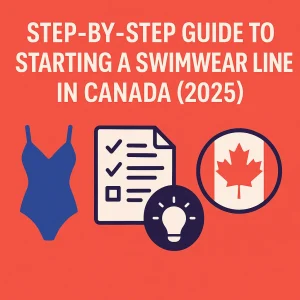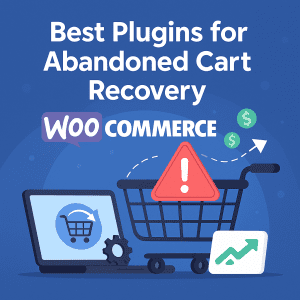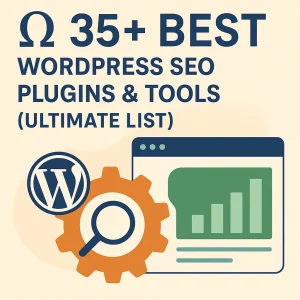 Soak your skin in sunshine, dip into refreshing pools, and wear swimwear n you feel confident in—these are visceral feelings you wish to evoke. Entering the swimwear sector is therefore not only about selling a product; it is about selling a lifestyle, freedom, and happiness. The opportunity in Canada is why it's extra enticing.
Soak your skin in sunshine, dip into refreshing pools, and wear swimwear n you feel confident in—these are visceral feelings you wish to evoke. Entering the swimwear sector is therefore not only about selling a product; it is about selling a lifestyle, freedom, and happiness. The opportunity in Canada is why it's extra enticing.
Canada is in places of mountains and lakes contrasted by endless outdoor life; always, this is true. With long summers, and beautiful lakes and ocean coasts from the Great Lakes to the shores of the Pacific and Atlantic, the demand for swimwear is surely there, and it is ready for fresh designs. It is this atmosphere that will ensure a thriving swimwear brand captures the very essence of Canada.
However, turning any artistic idea into a meditating full-fledged business requires a lot more than just one good thought. It takes accurate planning and strategic execution, along with much profound and granular understanding of the Canadian market. This is more than
a handbook; it is an entire roadmap allowing you to equip yourself with the knowledge and tools to succeed in following this journey.
It's a detailed guide that will take you through every single step of starting your swimwear line-in-Canada for 2025. We will be starting all the way from step number one: transforming your idea from thought to paper business plan. Not merely made up of fabrics and cuts, it is a biogenically something that requires quite the sturdy foundation: this phase of research and a lot of planning to ensure that the audience experiences the compelling brand identity you have created. And in today’s digital time, this includes building a strong online presence—leveraging SEO-friendly website design for fashion brands so your swimwear line can stand out, interest the right audience, and make waves in the competitive Canadian market.
Phase 1. Market Research: Climbing the Landscape of Canadian Swimwear
- Find Your niche: The swimwear market is not one. Who do you really want to be marketed to specifically among these different generations, whether it be millennials, Gen Z, or baby boomers? From which style will you get into that category- minimalist, bohemian, athletic, or retro? Should your swimwear focus solely on specific needs, such as plus-size, maternity, or sustainable swimwear? Narrowing down your niche would help with your designs, marketing strategies, and overall brand message.
- Get to Know Your Competitors: Identify those currently operating in Canada and around the world that manufacture swimsuits in the niche that you target, along with product offerings, pricing, and marketing strategies associated with these brands. Comparing what online presence they have and what their customers say will also be really helpful. What do they do well? Where is the gap in the market?
- Know Your Customers: Analyzing your potential audience will help you understand who is most likely to purchase your product. The demographics, psychographics, shopping habits, and lifestyle of the target audience will help you in getting to know where they shop online: what values and concerns they hold-all within the context of sustainability, ethical production, and the like: Values and concerns. There are many useful insights to be derived from surveys, focus groups, and social media trends.
Stay in the know about the latest Trends: The fashion business is so fast. Get to know the latest features, styles, colors, and fabrics. Subscribe to fashion blogs, join events either virtual or physical, analyze social media, and keep your work contemporary.
Business Strategy: Chart Your Course Towards Progress
Where you say all your goals and strategies and how you will be able to make a profit is what the effective and epic bearing business plan is - a roadmap. Here are some of the significant components:
- Executive Summary: One- to two-page summary of your overall business concept, mission, and goals.
- Company Description: What is your brand and its unique selling proposition? To whom would you be marketing your product?
- Market Analysis: In-depth research about the target market, competition, and industry trends.
- Products and Services: This covers complete specifications of your line, its designs and types of fabrics and sizes, as well as any particular features your swimwear may have.
- Marketing and Sales Strategy: How your targeted audience would be reached to build brand awareness, traffic to your online store, and sales. This will cover your digital marketing plan-seo, social media, email marketing, paid advertising-, public relations, and potential collaborations.
- Operations Plan: How you will manage production, sourcing, inventory, order fulfillment, and customer service.
- Management Team: Information about you and any key team members, highlighting relevant experience and expertise.
- Financial Plan: This has detailed financial projections covering startup costs, sales forecasts, expense budgets, cash flow statements, and profitability analysis. This is critical, both as funding requirement and as a long-term sustainable business.
Branding : Tailoring Your Unique Character
Brand identity is the best for telling what defines really the source well for the target audience and competitors. Yes, it is not merely the logo but everything that advocates who your organization is and what you represent.
- Define Brand Vision and Values-user: What's the story of brand behind-the-brand? What would those core values be (i.e., sustainability, inclusivity, empowerment)?
- Name and Brand: Here's the deal: A catchy, useful name that will be very relevant, along with domain-name availability as well as social media handles, will do you good. Create an amazing logo that works well to visualize the fantasized personality of your brand.
- Create Your Brand Voice and Messaging: These are your core principles with which you communicate. Messaging must always be in line with the brand values that resonate with audiences.
- Develop your Visual Identity: Colors, typography, imagery, aesthetic, etc. Consistency is key in all these visual elements for brand recognition.
Phase of 2: Bringing Your Vision down: Design, Production, and Operations
With quite some active plan on some of the more practical aspects with your swimwear line, we will go ahead and set the design and product development for the making of your collection.
Design and Product Development: Your Collection Made
- Conceptualization and Sketching: Bring the ideas you conjured up in your mind to paper and transform them into digital drawings. Play with silhouettes, necklines, back designs, and levels of coverage.
- Fabrics Sourcing: Find and select high-quality fabric for swimwear that fulfills the criteria of sturdiness, stretch, comfort, water resistance, and environmentally sustainable. Check options available with Canadian suppliers and international sources.
- Fit Pattern Making & Sampling: Patterns in accordance with your design are to be created. Sample garments are to be fitted, checked for functionality, and finally appearances for the swimwear are similarly tested. This phase usually involves several rounds of fit and related adjustments in the process.
- Size and Fit: An excellent distinct sizing chart will be developed. All different shapes should be considered that wear your swimwear. Be inclusive to different sizes and shapes.
Production and Manufacturing: Scaling Up Your Designs
- Choosing a Production Method: Produce your swimwear by yourself or with a local Canadian manufacturer. You can also use an overseas factory. Costs vary by advantage and disadvantage of all production methods in terms of price, control, quality, and timing.
- Finding and Vetting Suppliers/Manufacturers: Conduct thorough research and vetting of suppliers and manufacturers. Ask for samples and make sure their quality control system coincides with your ethical and sustainable guidelines.
- Negotiating Terms and Contracts: Through dialogue, clearly determine the terms of your agreement with the selected manufacturer, pricing, production timing, and quality standards.
- Quality Control: Execute stringent measures of quality control at all stages of the production process so that your swimwear conforms to the established standard.
Inventory Management and Logistics: Getting Your Products to Your Customers
With an efficient inventory and logistics management system, the customer will experience a smooth sale. This is where you make sure that your magnificent collection of swimwear gets on from the workshop to your customers.
- Inventory planning: Based on your market research data, estimate demand for every style, size, and color of swimwear. Create a trend analysis and historical data analysis using either a simple spreadsheet or specialized inventory management software. Forecasting accurately helps to decide production quantities adequately and avoids two such major pitfalls: stockout( missing sales because of running out of a popular item) or excess inventory(tied-up capitals on goods that are not selling).
- Warehousing and Storage: You will need a place to store your inventory before it is shipped. For a new business, this may mean your dedicated space, like a spare bedroom or small garage. As you grow, you might consider a third-party logistics (3PL) provider. A 3PL company handles warehousing, inventory management, and shipping for you, which can save you time and space.
- Order Fulfilment: Getting the order from the customer delivered to their doorstep is order fulfilment. You need a system to process orders once they arrive, pick the correct items from inventory, pack them securely, and ship them. Your eCommerce platform probably has basic tools for this, but you'll want to integrate with some shipping software to make your processes flow better. We're trying to make this process as efficient for you as possible and as accurate for your customer.
- Shipping and Returns: Your policies here are a huge part of the v customer experience. Setting clear policies on shipping costs, estimated delivery times, and carriers will help in this area. Giving customers the option of standard or express shipping accommodates their needs. Then, the return policy must be concise, easy to understand, and most importantly, favorable to build consumer trust and reduce apprehension in making purchases. Customers gain confidence that they can return items that don't fit or aren't what they expected if they have a friendly and simple exchange and return policy.
Phase 3: Building Your Digital Presence – eCommerce and Marketing
In order to create a space for a strong online presence that would complement a brand, swimwear was the one to most directly come to mind. In such an e-business venture as this, an online store serves as the center of action in giving your swimwear brand a digital presence. Without a solid hosting environment, slow loading times or site outages can easily cause an online brand to "lose" customers.
Build Your eCommerce Store: A Digital Flagship
- Choosing the Right eCommerce Platform: This is an eCommerce platform that you will select according to your needs regarding all features, scalability, ease of use, and price. Popular choices in Canada are Shopify, WooCommerce, and BigCommerce.
- Perfect Domain Name : It should be catchy, brandable, and easy to spell as a domain name. Unfortunately, it will not be available anymore if it does not have a brand name.
- Build an SEO-Friendly Website: Not only is it beautiful, but it should also be search-engine optimised. This includes:
- Clean and Intuitive Navigation: Make it easy for visitors to find the products and information they are looking for;
- High-Quality Product Photography and Descriptions: Very professional with images, compelling descriptions;
- Mobile Compatible: Web pages appear and operate excellently on every device, desktop, tablet, even smartphones;
- Fast Loading Speed: Make images light and the code of the site efficient to ensure fast loading speed. This is very important in terms of user experience and SEO;
- Secure Checkout Process: Builds trust with your customers by having a secure and smooth checkout process;
- Payment Gateways and Shipping Companies: Link your e-store with reliable payment processor and shipping services.
Pick the Right Web Host: The Foundation of Your Online Success
A little of what you will need from your web hosting provider will really show how well your online store performs and is reliable. For example, a swimwear brand in Canada would do best with a hosting solution that promises speed and security, along with excellent support, within the Canadian context.
- Best eCommerce Hosting in Canada for Swimwear Stores: Look for hosts that have servers located in Canada; thus, an access time of less than one second is possible for Canadian customers. Consider features like scalability to handle traffic spikes, robust security measures, and easy integration with your eCommerce platform. 4goodhosting, for instance, specializes in offering best eCommerce hosting in Canada for swimwear stores .
- Managed WordPress Hosting Canada for Fashion Brands: If you decide to create a store on WordPress (which often goes along with WooCommerce), managed WordPress hosting Canada for fashion brands will come with lots of advantages. Usually, this includes automatic updates, additional security, and expert support for WordPress sites so you can focus on what matters: your business, not the technicality. 4goodhosting offers very dependable managed WordPress hosting configurations for Canadians.
- Hosting of Online Clothing Stores that are PIPEDA-Compliant: As a Canadian entity collecting and maintaining customer data, the provisions of PIPEDA (Personal Information Protection and Electronic Documents Act) were to be complied with. Having PIPEDA-compliant hosting for online clothing stores would ensure that the hosting company followed the Canadian privacy laws related to personal information collection, use, and disclosure. Before making a decision, find out about a provider's PIPEDA compliance measures, as does 4goodhosting, concerning the confidentiality of data and PIPEDA-conscious hosting environments.
- Canadian VPS Hosting for Fashion eCommerce: This kind of hosting allows clients to enjoy a more individualized or controlled hosting experience and server resources compared to shared hosting. Canadian VPS Hosting for Fashion eCommerce provides you with part of a dedicated server, thus improving performance and security. 4goodhosting has a very broad range of VPS hosting services in Canada.
Your online store is the heart of your swimwear brand’s digital presence. Without a stable hosting environment, you risk losing customers to slow load times or site outages. Discover how other Canadian entrepreneurs choose scalable hosting platforms for Canadian startups to build a foundation for long-term success.
Traffic Generation and Sales: The Marketing Strategy
- SEO Services for Online E-Commerce Fashion Stores in Canada: Search engine optimization (SEO) makes it easier for organic traffic to come into an online store by creating, optimizing, and technically mapping content on the site to achieve better rankings in search engines concerning chosen keywords. Investing in eCommerce SEO services for Canadian fashion stores will ensure that one gets the best technical and strategic advice on improving the international visibility of Canadian shoppers. Also, ensure that any SEO partner you choose understands certain peculiarities about the Canadian market and how to navigate the search scenario.
- Social Media Marketing: Build a solid presence on all the relevant channels, especially those frequented by your target audience (Instagram, Pinterest, TikTok, Facebook, etc.). Post compelling new content, advertise and target specific demographics with optimal reach in your marketing, and try to build a rapport with your audiences-all of which help to promote brand awareness and bring traffic to your store.
- Email Marketing: Develop a database of email addresses and use email marketing to build lead nurturing, announce new products, announce discounts, and enhance customer loyalty and retention.
- Content Marketing: Produce relevant and informative posts from blogs, style guides, and videos geared toward providing value on swimwear, fashion, and lifestyle that will most likely attract organic traffic and establish your credibility in your niche.
- Then comes Paid Advertisement. Paid channels should count o n Google Ads and social media ads, which can take your audience beyond just the oceans and drive targeted traffic to reach your store.
- PR and Influencer marketing: Brand awareness through coverage in the media and coverage by fashion bloggers, where their followers can also promote your swimwear with relevant influencers.
Phase 4: Launching and Growing Your Business – Legal, Financial and Ongoing Management:
Launching your swimwear line is a great leap, but only a starting point; now is the time to commit yourself to nurture this venture into a sustainable long-term business that will examine the vital legal, financial and strategic elements that will be the impetus for growth long after the initial buzz fades.
Legal and Regulatory Obligations in Canada
Running a business in Canada has its own sets of legal obligations. Following these from the first day will help keep your business safe and enable it to build trust with its customers.
- Business Registration: You must now register the name of your business through the correct provincial or territorial government if you are self-employed, have partners, or have become a corporation. You can also have a legal protection of your business name and prevent others from using it. You may also need certain licenses and permits, depending on where you are located and the type of business you are conducting. Your first destination would be to visit your actual territory or provincial government site.
- Taxation: The owner of a business in Canada comes across taxation. Registration and remittance of the GST/HST (i.e., Goods and Services Tax/Harmonized Sales Tax) are required if your annual revenue from taxable supplies exceeds $30,000. These requirements have significant impact on your pricing and financial projections.
- Privacy Laws (PIPEDA): PIPEDA refers to Personal Information Protection and Electronic Documents Act. It is the Canadian Act that has rules on how private sector organizations can collect, use, and disclose personal information. This applies to your online store, namely that a well-highlighted, clearly accessed site privacy policy should indicate what kind of information you gather (names, addresses, payment info), as well as for what purpose and how that information is kept safe.
- Consumer Protection Laws: Get familiar with the laws of your province that protect consumers. This will include rules about product safety and labeling, ensuring your swimwear's features are not exaggerated and that no hazardous substances are included. Another important part of consumer protection and simply good business is a transparent and fair returns and exchanges policy.
- Intellectual Property Protection: Your brand is one of your biggest assets. By this stage, you should really consider applying for trademark and copyright registrations for your brand name, logo, and original designs. Your trademark registration now gives you the exclusive right to use this brand name and logo across Canada and to prevent anyone else from using it.
Financial Management
Sound financial management is the cornerstone of a good business. Without it, even the best-designed swimwear line is taken to the grave.
- Accounting and Bookkeeping: From the very first day, set up a system to track all income and expenses. It could be something very basic like a spreadsheet or something more complex like proper accounting software like QuickBooks or Wave. This is important for tax purposes, yes, but it gives you a good insight into how healthy your business is financially.
- Payment Processing: Your online store should have reliable and secure payment gateways for accepting payments from clients. Stripe, PayPal, and Shop Payments are some of the most popular options that guarantee a seamless checkout process and protect customer data.
- Budgeting and Forecasting: Review your financial performance on a regular basis. Create a detailed budget to track expenditures, as well as a sales forecast that anticipates future income. Hence, this information will guide you in inventory management, marketing, and expansion.
- Funding and Investment: Mostly, if your need for funding, per your plan for growth, is more than what you have at hand, you can start looking for small business loans, grants, and investments. In this case, designing a solid business plan alongside a very appealing pitch deck will be essential.
Customer Service and Retention
You've made some sales for now, but the growth comes in ensuring a loyal customer body.
- Awesome Customer Services: Always be prompt, helpful, and upbeat. Provide customer service through many channels, such as email and DMs through social media, plus a live chat feature on your website. A fast response to inquiries helps turn one-time customers into a brand advocate.
- Building Customer Relationships: Customers interact with your brand outside of the products it sells. Your social media presence is the place to create conversation with your community, respond to comments, and ask for opinions. That nurtures a sense of community, which guarantees your customers feel listened to and valued.
- Create a Loyalty Initiative: For encouraging repeat business. Exclusive discounts, early access to new collections, or special perks through a loyalty program can greatly increase customer lifetime value and retention.
- Customer Feedback: Updates don't assume your products are perfect. Solicit feedback through post-purchase emails, surveys, and social media polls. Incorporate that feedback into improving your designs, sizing, materials, and overall customer experience.
Continuous Improvement and Adaptation
Change will always take place in any market, and so should your business.
- Keep an Eye on Website Analytics: Data from Google Analytics or the dashboard of your eCommerce platform are of great significance. Monitor your website traffic, conversion rates, bounce rates, and customer behaviour as key indicators. This can provide you with data to help understand what is working and to optimize your online store and marketing operations.
- Build Knowledge Around Ups and Downs in the Fashion/ eCommerce Industry: The fashion and e commerce industry is ever so rapidly changing. Constantly research the latest trends in swimwear, emerging digital marketing techniques, and shifts in consumer behavior? This keeps your brand up-to-date and fiercely competitive.
- All Critiques, Take on and Build Upon: The first collection is merely an inauguration, not a conclusion. Hold feedback sessions with customers and internally with the team. Use this knowledge to enhance products and services for the next collections.
- Create New Possibilities: When your business structure has taken a stable shape, turn your thoughts toward expansion possibilities. This may include expanding to cover-ups, entering new markets, or trying up-to-marketing means such as brand collaborations or pop-up shops.
Conclusion
As the curtains are drawn upon this guide, your journey is now taking shape. A Canadian swimwear line in 2025 is more than just a business; it's the final act in materializing a creative dream. The road to success has been chalked out by all the carefully considered milestones we have encountered, including the in-depth and strategic analysis of market research to the careful selection of a hosting partner who really knows the Canadian terrain, such as 4goodhosting. Your brand is only as good as the reflective aspect of you; its heartbeat lies on the secure and scalable web hosting. There is a very simple yet deep truth that lies far away from the technicalities and business plans: successful brands are built on undeterred conviction, a will to stand the test of times, and a genuine connection with their consumers. So, breathe out, let your creative juices flow, and create a ruckus. The Canadian market is waiting for your vision.














